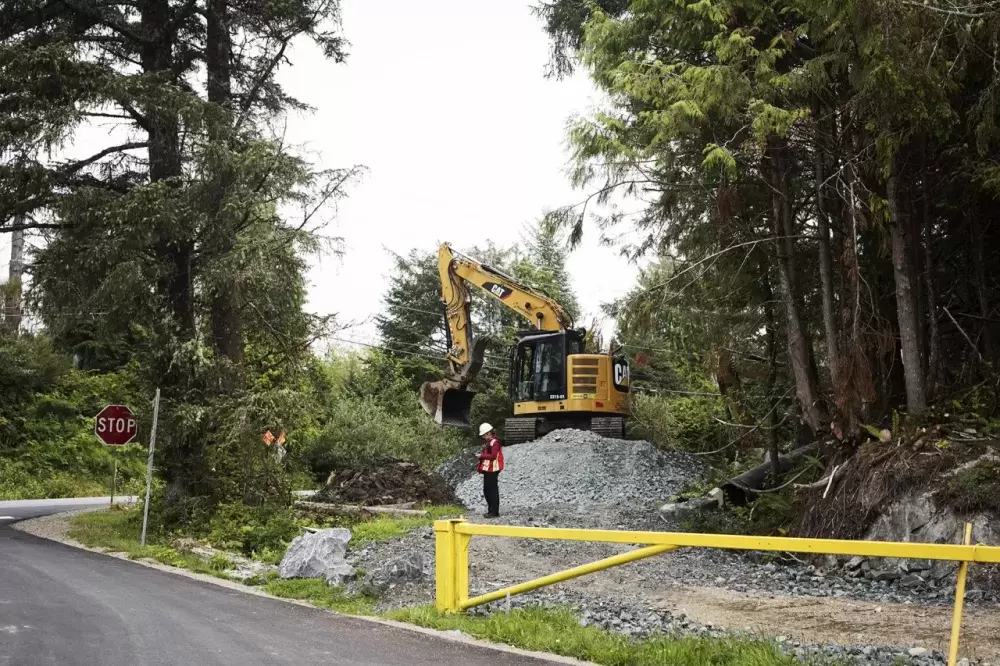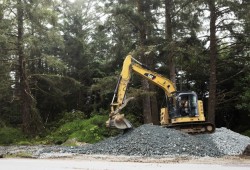Construction of “ʔapsčiik t̓ašii, the multi-use pathway that will extend between Tofino and Ucluelet, remains on target to be completed in March 2022.
The $51.1 million infrastructure project is aimed at allowing Canadians to connect with nature, while also supporting economic opportunities within the region.
“Pacific Rim National Park Reserve is seen as the place that connects people and communities in the region,” said Parks Canada. “ʔapsčiik t̓ašii is the result of a long-time vision shared by local residents’ communities, including First Nations communities, as well as visitors.”
After welcoming the return of visitors to Vancouver Island’s west coast during Phase 3 of B.C.’s restart plan, Tofino has been struggling to deal with the unexpected volumes of tourists and the onslaught of trash they are leaving behind.
“When you open up trails, there’s tourists that will leave garbage everywhere,” said Terry Dorward, Tla-o-qui-aht Tribal Parks project coordinator. “[Are] there going to be opportunities there for our people to ensure that this place doesn't become a disastrous area, with more and more tourists [and] illegal camping? That’s what we’re seeing right now.”
Although Tla-o-qui-aht leadership, Hereditary Chiefs and elected council support the trail for its economic opportunities, there are some ongoing issues that have yet to be worked out, said Dorward.
“When garbage is left behind, it can have a detrimental impact [on] the health of the national park reserve and the experience of visitors,” said Parks Canada. “Parks Canada provides dumpsters and garbage cans for waste throughout the national park reserve. We ask visitors to take the time to dispose of their waste properly.”
Based on the Rocky Mountain Legacy Trail in Banff National Park, Parks Canada predicts that an average of 500 visitors will use the “ʔapsčiik t̓ašii daily.
“There’s a lot of money flowing,” said Dorward. “A lot of opportunities as Tla-o-qui-aht that seem to be passing us by.”
Parks Canada said that before work began on the ʔapsčiik t̓ašii, they worked with Tla-o-qui-aht and Yuułuʔiłʔatḥ First Nations to identify short and long-term economic benefits.
This included support conducting a “traditional use study and identifying traditional ecological knowledge in relation to the proposed route so their interests are recognized and accommodated,” said Parks Canada.
In their ongoing discussions, Dorward hopes that Parks Canada will support a larger guardian program so that long-term environmental monitoring of the area can continue after the pathway’s completion.
“We suffer from high levels of unemployment,” said Dorward. “We have a lot of homes being built at Ty-Histanis and we need jobs for our people – jobs that are going to be sustainable [and] jobs that are going to be local.”
By working collaboratively with Tla-o-qui-aht and Yuułuʔiłʔatḥ First Nations, Parks Canada is aiming to create economic opportunities within the communities.
“One such opportunity was the inclusion of an Indigenous Benefits Package in the trail bed construction contract,” said Parks Canada. “The Indigenous Benefits Package commits Hazelwood Construction Ltd, the trail bed contractor, to provide employment and training opportunities to members of both Nations during the building phase.”
Job fairs were hosted within Ty-Histanis and Hitacu on June 5, 2019 and January 21, 2020, where interested community members met with the contractor and Parks Canada to discuss employment opportunities, said Parks Canada.
As the project marches on, conversations between the Nations, Parks Canada and Hazelwood Construction Ltd will persist.
“Parks Canada is committed to ensuring that all infrastructure projects are cost-efficient,” said Parks Canada. “While respecting the mandate to protect the ecological integrity and cultural heritage of protected places.”








